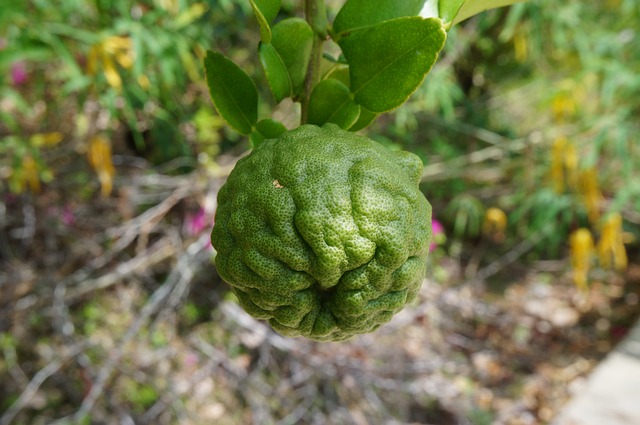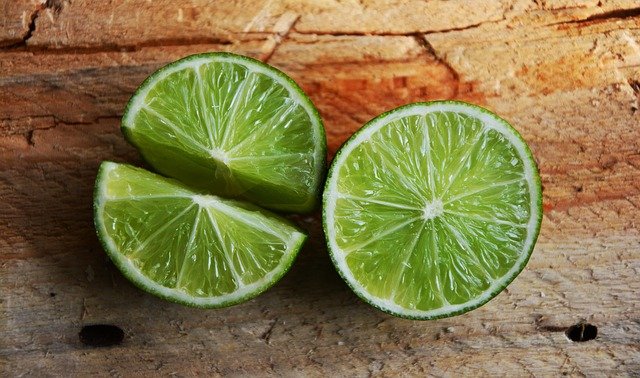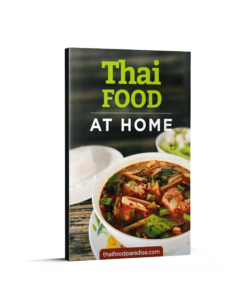What’s the Difference? Kaffir Lime vs Lime

Limes and kaffir limes are two distinct fruits that both play important roles in cooking authentic Thai food. This article attempts to help you learn the difference between kaffir lime vs regular limes. Knowing about this difference is important.
It’s probably best to start with the fruit that is less commonly found in Western supermarkets.
What is a Kaffir Lime?
A kaffir lime is a citrus fruit native to Southeast Asia. Thai food makes use of both the fragrant leaves and the bumpy, aromatic skin of the kaffir lime.
Top Tip #1: When you buy kaffir lime leaves in a bunch with the stems, be careful of the thorns.
How to Use Kaffir Lime Leaves
Far more common in Thai food is to use the leaves of this type of lime, which the Thais call ‘bai makrut‘ (bai means leaves and makrut is a kaffir lime). Thais often place whole kaffir lime leaves in curries and soups to impart a wonderful citrus twang and fragrance to these dishes. In fact, kaffir lime leaves form part of the holy trinity that forms the basis of many Thai soups, alongside galangal and lemongrass.
Top Tip #2: When you use kaffir lime leaves in dishes, the idea is that the liquid benefits from their aroma and citrus twang. You generally don’t eat the leaves because they are tough.
The zest of the kaffir lime is also used in Thai cuisine, albeit more sparingly. It’s sometimes used in making curry pastes. Interestingly, the peel is commonly also used as a foot scrub in Thai spas and massage shops.
It can be challenging to find fresh kaffir limes in regular supermarkets in Western countries. You’ll have better luck searching in Asian markets. If you do find the fruit and you don’t plan to use it within a couple of days, it’s fine to freeze them. The case is similar for the leaves; you can freeze them and reuse later on.
Regular Limes in Thai Food

Known as ‘manao’ in the Thai language, regular limes play a crucial role in adding sourness to Thai dishes. It is most commonly the juice of regular limes that gets added to a variety of Thai recipes like papaya salad and more.
It’s quite common to get served extra lime wedges with your dishes when you eat at a Thai restaurant or food stall because some people prefer a more sour flavour. In fact, Thais often describe dishes with not enough lime juice as ‘jood’, which means bland.
Top Tip #3: There are no good substitutes for fresh lime juice. By that I mean don’t buy the crappy bottled stuff when fresh limes are so abundant all over the world.
Kaffir Lime vs Lime: Can You Substitute Them?
That’s the key question, and the answer is that it depends. In general, regular lime leaves are a poor substitute for kaffir lime leaves because they are more bitter and less aromatic. The juice of kaffir limes is not a good substitute for that of regular limes.
A situation in which substituting one for the other is ok arises when a recipe calls for kaffir lime zest. Instead, you can squeeze some regular lime juice and shave off some regular lime zest to replace the strong citrus flavour of the kaffir zest.
Closing Thoughts
Hopefully, this article cleared up any questions you had on the topic of kaffir limes vs limes. If you want to see some recipes where both of these appear, check out my Thai cookbook, Thai Food At Home, which costs less than a Thai takeaway for over 25 recipes.
I lived in Thailand for a few years during my 20s during which time I fell in love with Thai food. Along with my Thai partner, I cook and eat tasty Thai dishes 3 or 4 times per week. I’m here to bring you recipes, Thai food tips, and suggested cookware for making Thai food.
